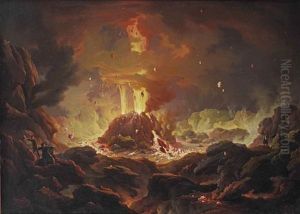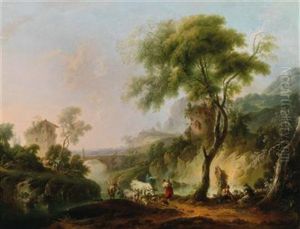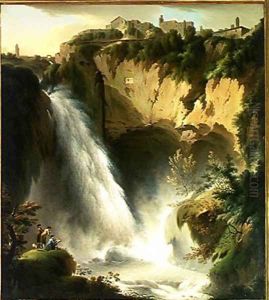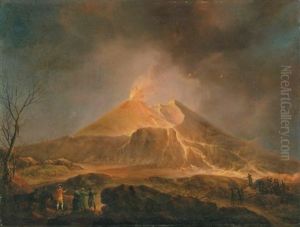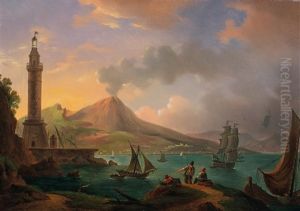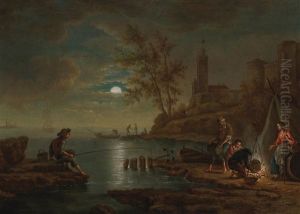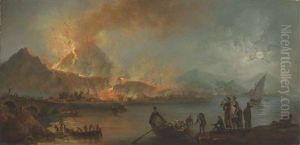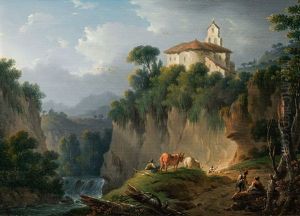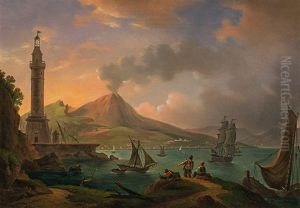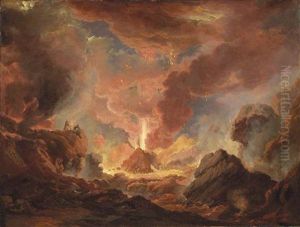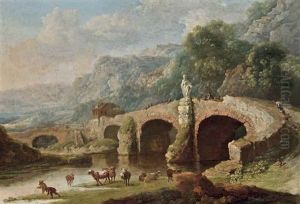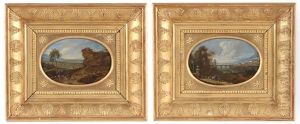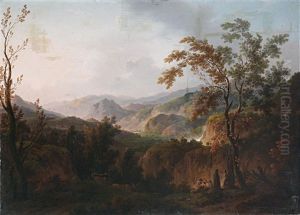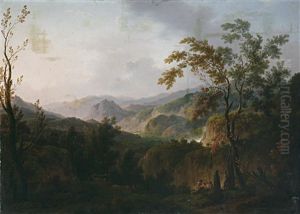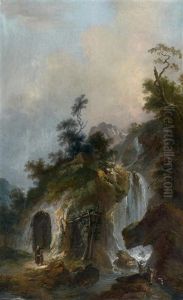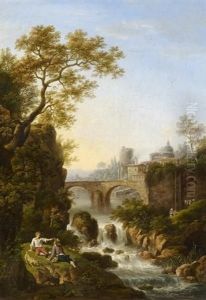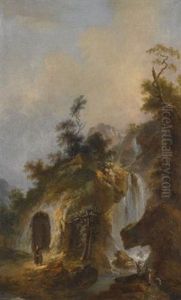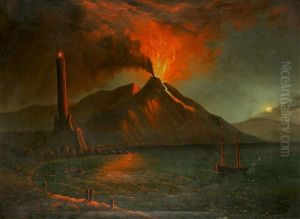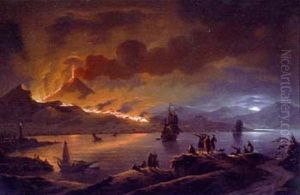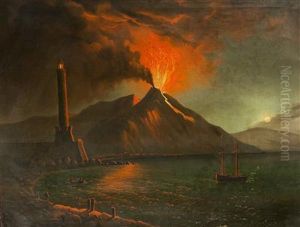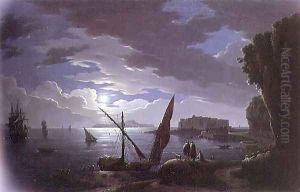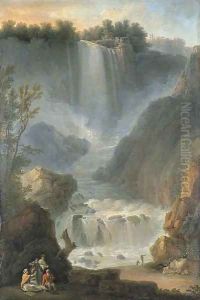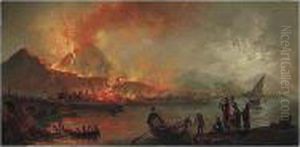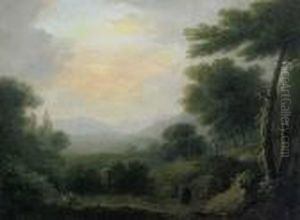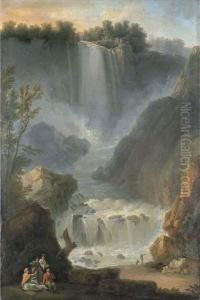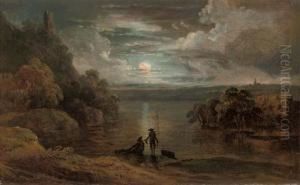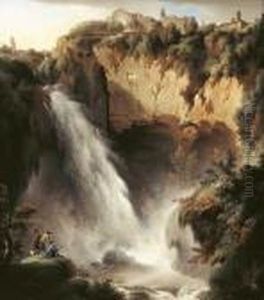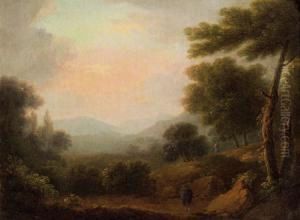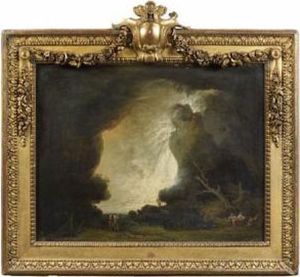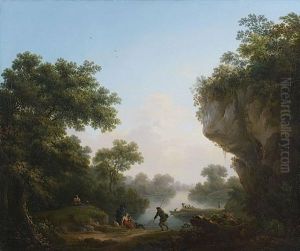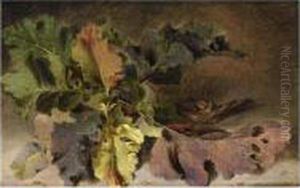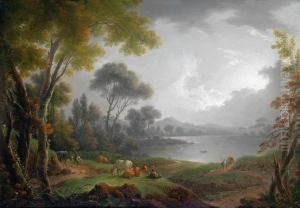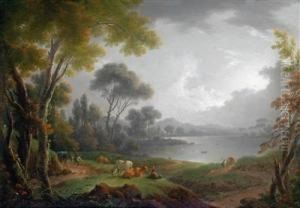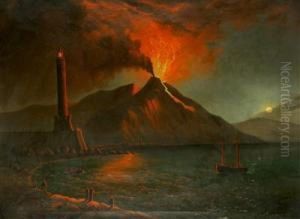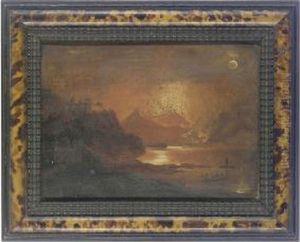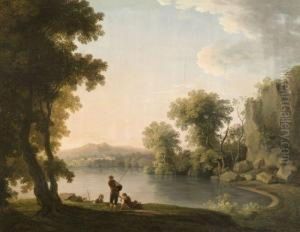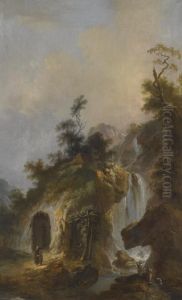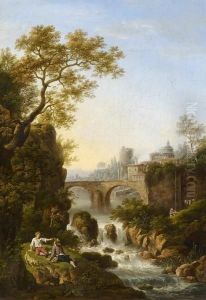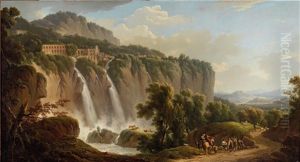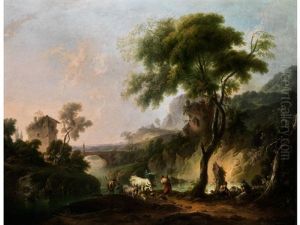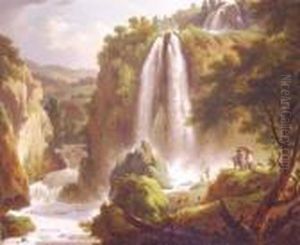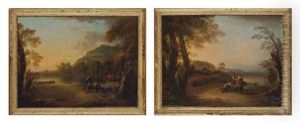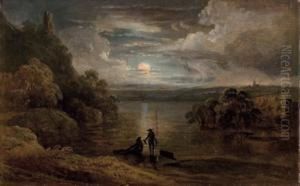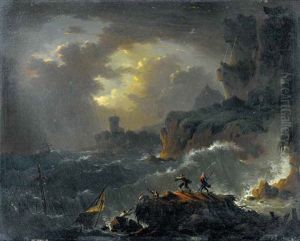Michael Wutky Paintings
Michael Wutky (1739–1822) was an Austrian painter, known primarily for his landscape and veduta paintings that capture the spirit of the Romantic era. Born on September 27, 1739, in Krems an der Donau, Austria, he became one of the most prominent landscape painters of his time, particularly celebrated for his depictions of natural phenomena and ruins.
Wutky began his artistic journey studying under the guidance of Martin van Meytens, a court painter in Vienna. His early works were influenced by the Baroque style, but as his career progressed, he was increasingly drawn to the burgeoning Romantic movement, which emphasized emotion and the sublime beauty of nature.
During the 1770s, Wutky embarked on a significant journey to Italy, where he was deeply influenced by the dramatic landscapes and ancient ruins. His Italian sojourn was transformative, and upon his return to Austria, his style had evolved to incorporate elements of the picturesque and the grandeur of nature. This period was marked by a series of works depicting the Italian countryside, the ruins of Rome, and the volcanic activities of Mount Vesuvius, which he witnessed first-hand.
Wutky's paintings of Vesuvius erupting became particularly famous, reflecting both the Romantic fascination with the untamed aspects of nature and the era's scientific curiosity about natural phenomena. His ability to capture the fiery glow of lava and the atmospheric effects of smoke and ash garnered him considerable attention and patronage.
In Vienna, Wutky became a respected member of the art community, contributing to the city's cultural life. Despite the popularity of his Italian landscapes, he also produced works that featured Austrian scenes, showing versatility in his subject matter.
Michael Wutky's contributions to Romantic landscape painting remained influential beyond his lifetime. His works are characterized by their vivid coloration, dynamic compositions, and the emotional resonance they evoke. Wutky passed away on August 12, 1822, in Vienna. Today, his art continues to be appreciated for its historical value and its embodiment of the Romantic spirit in European art.
